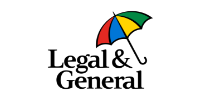
Dog insurance quotes tailored to match needs of your furry friend. Get your quote today!
- Pick affordable pet insurance by comparing with 15+ leading insurers
- Join the ever-growing list of 3 million customers
- In partnership with QuoteZone
Providers
Compare Pet Insurance quotes from 15+ major UK Insurers.








How much is Dog Insurance?
The cost of pet insurance can vary based on several unique factors related to your individual pet. Each pet insurance policy is tailored to the specific circumstances. To obtain a precise figure for your pet insurance, compare quotes below.

The following are some factors that affect Pet Insurance premiums in the UK:

Pet’s Age
The age of your pet plays a crucial role in determining insurance costs. Generally, insuring your pet while it is young tends to be more affordable.

Pet’s Species
The type of pet you have, whether it’s a dog, cat, rabbit, or another species, will impact the insurance premium.

Pet’s Breed
The breed of your pet can also affect insurance rates, as some breeds may be more prone to specific health issues.

Coverage Level
The extent of coverage you choose to include in your policy will influence the cost. More comprehensive coverage typically comes with higher premiums.

Location
Your location can impact insurance rates, as veterinary costs may vary in different regions.
What types of dog insurance are there?
Choosing the right type of pet insurance depends on your budget, your pet’s health needs, and your long-term plans for insurance coverage. Here are four primary levels of pet insurance available in the UK:
Accident Only
Accident only pet insurance covers medical expenses incurred if your pet is injured in an accident. It tends to be the most affordable option but does not cover illnesses. Some accident-only policies may limit the total payout for a single accident, while others might have a time limit for coverage after the injury.
Time-limited dog insurance
Per condition pet insurance typically sets a limit on the total amount they will pay out for a specific medical condition. This limit could be a monetary amount or cover the condition for a certain duration following diagnosis. It can be a cost-effective choice but check the per-condition limits before purchasing, as cheaper policies may have lower limits.
Maximum benefit dog insurance
Unlike lifetime insurance, annual policies offer the flexibility to switch insurance providers, but keep in mind that each new policy may become more expensive as your pet ages. Additionally, previously diagnosed conditions are usually considered "pre-existing" and won't be covered under a new policy.
Lifetime dog insurance
Lifetime insurance is the most comprehensive option. If your pet doesn't have pre-existing medical conditions when you first enrol, you're typically covered for most types of illnesses up to a maximum annual payout amount. These policies are also known as annual benefit policies, as they have a per condition limit that renews annually with the policy.
It’s important to carefully review the terms and conditions of each policy to ensure it aligns with your expectations and provides the necessary coverage for your pet’s well-being.
Dog Insurance Checklist*
What does dog insurance cover?
- Standard feature: Provides protection against unexpected damage caused by natural events such as heavy rainfall or river overflow.
- Buildings insurance: Provides cover to structure and permanent fixtures.
- Contents insurance: Covers items inside your home, including clothing, electronics, furniture, and carpets.
- Most standard buildings insurance policies provide coverage for damage caused by subsidence, but this applies only if your property hasn’t experienced such issues before.
- Some policies may also include coverage for losses or damages to belongings due to subsidence and offer temporary accommodation if you need to move out during repairs.
Fire coverage is a standard inclusion in both buildings and contents insurance. If you have both types of coverage, it should safeguard the structure of your home as well as all the contents within it, from furnishings and appliances to jewellery, electronics, clothing, and books.
You almost certainly have coverage for damage resulting from storms under your buildings and contents insurance. This coverage can help mitigate financial losses caused by a storm, such as roof tiles being blown off. However, it typically applies only to your residence and any additional structures like sheds, excluding damage to fences, hedges, and gates.
Most standard buildings insurance policies encompass damage resulting from sudden water leaks or burst pipes, often referred to as “escape of water” coverage. Check with your insurer if your policy covers the repair or replacement of burst pipes, as some policies may only cover the damage caused by the leak. Note that gradual leaks, seen as a maintenance issue, are typically not covered.
Theft coverage is a standard inclusion in contents insurance but typically applies to items stolen from inside your home.
In reality, your phone is more likely to be stolen while you’re outside your home. To protect against this, you may need to add coverage for personal possessions outside your home, which is typically not part of the standard package. Double check with your insurance provider; if it’s not included, you can usually add it to your policy for an additional fee.
If the value of your engagement ring exceeds the single-item limit on your contents insurance (the maximum amount your provider will pay for a single item), you’ll need to have it separately listed on your policy. This applies to any valuable items exceeding the single-item limit in your policy. If you often wear your ring outside your home, it’s wise to consider additional coverage for personal possessions when you’re away from your premises.
Even if your keys are stolen from your home, they might be covered by your car insurance. Replacing modern computerised key fobs can be expensive, so it’s advisable to check both your car and home insurance policies to ensure coverage for theft, regardless of where your keys were taken from.
What does Dog Insurance not cover?
Your home insurance typically won’t cover the natural ageing or wear and tear of your belongings. So, if your favourite sofa is showing its age or your appliances give out, you’ll need to budget for replacements.
It’s important to notify your insurer if you plan to be away from your home for an extended period, usually beyond 30 days (some policies might allow up to 60 days). An unoccupied home can present higher risks, so you can browse quotes and help tailor your coverage or explore specialised options.
Standard home insurance doesn’t include specific asbestos coverage. However, if asbestos concerns arise after an insurable event like a fire or flood, your buildings insurance may assist with removal costs.
Accidentally spilling coffee on your laptop or causing mishaps to your belongings isn’t typically part of standard contents insurance. To safeguard against such incidents, you can usually add accidental damage coverage to your policy for a small extra cost.
Claims tied to issues stemming from inadequate home maintenance may be denied. For example, if a leak occurs due to neglected roof tile replacement or if dampness arises from poor ventilation, these could be viewed as maintenance-related and might not be covered.
Damage resulting from frost isn’t typically covered by most insurers, as home insurance is designed for unexpected events like storms or floods. Frost is considered a seasonal and expected occurrence.
Standard home insurance covers vandalism by strangers, such as break-ins or graffiti. However, it doesn’t extend to deliberate damage caused by you, your family, or invited guests.
Damage caused by pests like rodents is generally not included in most home insurance policies. However, if you opt for optional home emergency cover, you could receive assistance for pest removal.
Standard home insurance policies typically exclude damage caused by pets, including chewing, scratching, tearing, or accidents. So, if your pet leaves its mark, you would have to handle the repair or replacement costs. And remember, it’s important to notify the insurer if you have pets to ensure your policy remains valid.
Compare pet insurance for dogs of all ages:
Puppy Insurance
Assistance in case of sudden and unexpected home emergencies, such as boiler breakdowns, burst pipes, electrical failures, or lockouts. It typically offers access to a helpline for immediate assistance and covers the cost of emergency repairs, ensuring your home remains safe and functional.
Older Dogs
Accident cover provides financial protection in case you or a family member is injured within your home. It can help cover medical expenses, loss of income, or rehabilitation costs resulting from accidents that occur on your property.
What should I look out for when choosing dog insurance?
Type of Insurance
Different insurance types come with varied pricing. It’s crucial to weigh your options to find what suits your business best.
Industry Variations
Your industry or profession has unique risks, impacting the insurance cost. Tailored insurance is key.
Size of Business
Larger businesses with more employees or higher annual turnovers generally face higher insurance costs.
Level of Coverage
Comprehensive coverage across multiple policies will reflect in your premiums, but it’s worth the investment for the right protection.
Claims History
A track record of frequent insurance claims or past legal issues can increase your insurance costs.
Excess Choices
Opting to pay more towards any claims can lead to lower premiums, offering a potential saving strategy for your business insurance.
Understanding these factors will help you make an informed choice about your business insurance. It’s not just about the cost—it’s about securing your business’s future with the right level of protection.
Latest news:
Third-party liability pet insurance is coverage that protects you if your dog unintentionally causes harm or damages someone’s property, or pet. It can include covering legal expenses if you’re taken to court due to an incident involving your dog. However, it’s important to note that third-party liability insurance typically does not apply to cats, as they are legally considered independent creatures.
Co-insurance is a feature included in some policies. If you file a claim, you may be responsible for paying a percentage of the remaining vet fees after the deductible has been subtracted.
Pet insurance doesn’t cover the cost of pet vaccinations, but keeping your vaccinations up to date might get you a discount on your premiums with some policies. If your pet isn’t vaccinated, and you need to make a related claim, your insurance probably won’t cover the cost of treatment.
Yes, you can but you’ll need multi-pet insurance to cover them on the same policy and you’ll usually get a discount for it. But compare quotes for insuring your dogs separately on their own policies as well, as sometimes it’ll work out cheaper.



